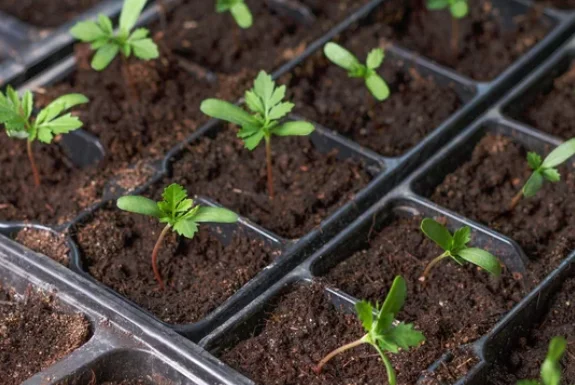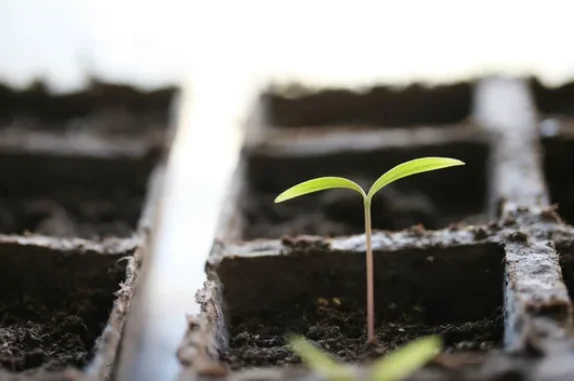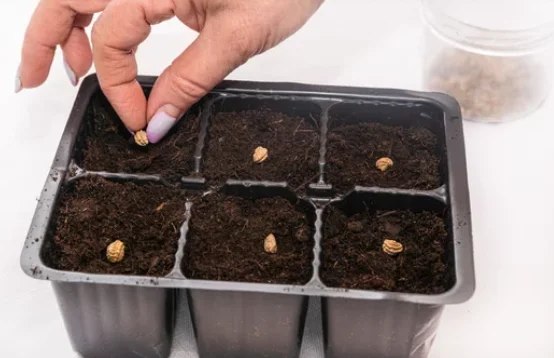Many people who are new to gardening make mistakes when they start their plants from seed.
They might not know the best way to plant, how often to water, how long to wait before harvesting, etc.
Some mistakes are easy to fix, while others are more difficult and might take a lot of time and patience.
Below is a list of common mistakes that people make when they start their plants from seed and how to avoid them.
Common Mistakes That People Make When Starting Seeds?

The mistakes that people make when starting seeds are many and varied.
Some of the most common mistakes include not enough light, too much water, too little soil, and not enough oxygen.
Seed-starting is a fun activity for many people, but it can also be easy to make mistakes when you first start out.
It’s important to keep these mistakes in mind as you get started so you can avoid them and have the best experience possible in your gardening endeavors.
Common seed-starter mistakes that people often make include:
- Not enough light
- Too much water
- Too little soil
- Not enough oxygen.
- Too much heat
- Too much nitrogen
- Not enough trace minerals
- Not enough balanced compost
What Are the Symptoms of Plant Stress?
Yellow leaves, a rapid decline in plant health, wilted plants;
flabby stems;
poor flower production, and
poor fruit development.
Drought stress may cause the plant’s tissues to become dry and brittle, which damages the plant. It can also cause plant leaves or fruits to wither, die prematurely, or be distorted.
What are the common causes of seed-starting mistakes?

Seed-starting mistakes
Seed-starting is a process that requires patience and care.
It can be difficult to get started if you don’t know what you’re doing.
It is important to know the common causes of seed-starting mistakes so that you can avoid them.
Seed starters fail to germinate If your seeds are not fresh, they will not germinate.
Make sure your seeds are stored in an airtight container in a cool, dark place until you need them.
Too Many Seeds Germinate in one place.
This happens when the soil isn’t properly prepared for planting or when the temperature is too high for seedlings to grow.
Instead of using too many seeds, plant only one or two at a time so that they have space to grow without competing with each other for nutrients and sunlight.
Planting too many seeds will also be likely to result in an overcrowded, weed-filled garden bed.
Soil Preparation
Planting After preparing the soil for planting, which will eliminate other potential obstacles like weeds or overcrowded gardens, you can plant your seedlings, spaced two to four inches apart.
Keep around one inch of space between plants when they are next to each other in a row. Locate plants in the sunniest spot possible.
Water plants deeply to the roots every two weeks during dry periods and whenever the soil feels dry to the touch.
What are the causes of poor seed quality?
Poor seed quality can be caused by poor germination, poor vigor, and unfavorable characteristics.
Poor seed quality can lead to a variety of problems in the field, including:
- Poor germination (low or no emergence)
- Poor vigor (slow growth and low yields)
- Unfavorable characteristics (such as short or weak stems and poor disease resistance)
What can you do about it?
There are a few ways to get better-quality plants. One way is to use auto-seeding techniques.
This can be done by planting seeds in the ground and then covering them with soil or by using a hydroponic system.
You can also plant your seeds in pots, trays, or containers that have drainage holes that allow water to drain out of the soil.
You should also make sure that you give your plants enough light, water, and nutrients so they can grow well.
How To Avoid Seed-Starting Mistakes
To avoid seed-starting mistakes, you should take some time to prepare your garden.
You might need to change the soil, add compost, and plant a cover crop.
You can avoid starting seeds in the garden by starting them in a starter tray.
All you have to do is take out your old potting soil and replace it with a good-quality seed starting mix.
Then, add compost and keep your seed-starting tray moist until the plants are ready to be transplanted outdoors.
If you want to use a lighter mix, some vermiculite can be used instead of compost.
Lighter seed-starting mixes allow air and water to penetrate the plant roots more easily, giving them a better chance of growing strong.
It might also help to put a layer of wet paper towels or cloth in your tray.




